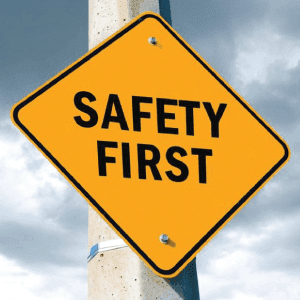Safety is a priority for all, but every organization has a point person who is directly in charge of the safety program. These people measure the effectiveness of safety programs, monitor workplace incident reports, lead the way with new safety initiatives and generally champion a safe workplace at all turns. Safety professionals have lots of indicators to consider when evaluating safety, so we have developed a quick guide to cover the basics that will allow those new to the safety team to hit the ground running with the most effective and transformative metrics.
How “Leading Indicators” differ from “Lagging Indicators”

The two groups of metrics safety professionals encounter most are leading and lagging indicators. While both help measure the effectiveness of organizational safety, there are key differences between the two.
Leading Indicators: A leading indicator is a measure preceding or indicating a future event used to drive and measure activities carried out to prevent and control injury. Leading indicators are focused on future safety performance and continuous improvement. (Proactive)
Lagging Indicators: Lagging indicators measure a company’s incidents in the form of past accident statistics. These are the bottom-line numbers that evaluate the overall effectiveness of safety at your facility. They tell you how many people got hurt and how badly. (Reactive)
While most organizations are accustomed to tracking safety results by measuring past accidents (lagging indicators), it is also important to track how effective your safety culture is at preventing future incidents (leading indicators). Let’s take a look at some examples of both.
Examples – Leading Indicators
- Safety Training: implement year-round safety training programs to educate all employees about jobsite safety, new equipment and emergency response.
- Employee Perception Surveys: acquire feedback from employees to find out how safe they feel doing their jobs. This information can help guide the safety training.
- Safety Audits: random checks of safety procedures, equipment and employee knowledge.
Examples – Lagging Indicators
- Injury Frequency and Severity: use data from previous injury reports to establish baseline. This data can show where extra education and attention to safety is needed.
- Lost Workdays: the amount of workdays lost due to injury. This gives you a number on which you can aim to improve.
- Worker’s Compensation Cost: a financial impact stat that can be used to showcase the financial gain that implementing more proactive safety measures can bring.
On their own, neither lagging and leading indicators paint a clear enough picture to effectively change safety culture. However, combine the two by measuring factors that can precede or indicate a future event (lagging indicators) and implementing policies that focus on training, awareness and development (leading indicators), and your organization can begin to change its safety culture. This will drastically cut the rate of future health and safety issues.
While this leading vs. lagging indicators overview gives you some fuel to get started, we have also put together a list of resources to help you further develop a comprehensive safety program that produces results.
- Canadian Centre for Occupational Health & Safety [Website]
- A strong case for Leading Indicators [Article]
- Link Between Personality and Safety [Whitepaper]
- Inspection vs. Assessments [Article]
- Creating a Culture of Safety [Article]
- How to Effectively Measure Safety Performance [Article]










